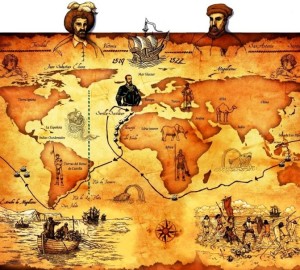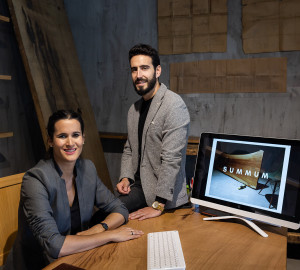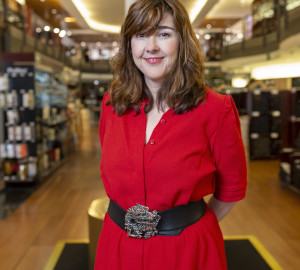Wine has accompanied mankind practically from the beginning of its history. History. Grape wine began to be made in the sixth millennium BC. Mesopotamia in the sixth millennium BC, so that by the time the writing was already there. It is understandable, then, that they grew up together and sometimes even interacted with each other to give rise to literary works with an oenological theme or, at least, a wine presence in some form.
That's why it might be interesting to take a look at this selection of literary creations that we have titled The role of wine in eleven novels. There are those of all times:
1. THE ODYSSEA (Homer)
It was inevitable to begin with the novel of novels, the model for all the others. True, strictly speaking, it is not a novel, but rather a poem composed of twenty-four cantos grouped in three parts and whose metric is called dactylic hexameter (six dactyls and a spondee or trochee) but most of the translations we can find are in prose, so the result is like a novel.
The thousand adventures of Odysseus (Ulysses) have one of their most famous episodes in the one in which the Achaean navigator and his companions are trapped in the cave of the Cyclops PolyphemusThey are gradually devoured by the giant. They are only saved by the protagonist's proverbial luck, who offers the monster a drink he has never tasted before: wine. Polyphemus ends up falling asleep from the effect of the alcohol and this will cost him the loss of his only eye... and his human food.
2. THE BARREL OF AMONTILLADO (Edgar Allan Poe)
Odysseus's ploy, getting the enemy drunk to exploit his consequent weakness, would be revived in 1846 by a writer like Poe, whose relationship with alcohol was self-destructive because of his dipsomania and ended up costing him his life.
In the middle of the 19th century, during the carnival in an Italian town, Montresor he hatches a devious plan to take revenge on Fortunato. After taking him drunk to his palace, he incites him to go down to the cellar to taste the exquisite sherry wine that gives the work its title. Amidst veiled allusions to Freemasonry, Fortunato will end up in chains and, without realising it until the last moment, he will sandwich without realising it until the last moment, in a short story included in the marvellous anthology of short stories that is Extraordinary tales.
3. THE CELESTINE (Fernando de Rojas)
Some consider this novel, half-dramatised and written in the time of the Catholic Monarchs by the bachelor Fernando de Rojas, who emphasised its ambiguous character with the original title of Tragicomedy of Calisto and Melibea (although in its first edition it came out without the "Tragi", only "Comedia").
The plot is quite familiar: Calisto, madly in love with Melibea, who does not love him back, hires an old procuress to use her wicked wiles to make the girl fall in love with him too. She succeeds but refuses to share the reward with the servants and ends up murdered, and then a fateful destiny also befalls the two lovers.
Celestina, the entangler in question, lives in a brothel in which she usually has as her interlocutor an old jug of wine to which she dedicates an monologue-homage that should be on the door of every cellar in the world: "It removes sadness from the heart, more than gold and coral; it gives strength to the young and the old; it gives colour to the faded, courage to the weak, and diligence to the sluggish. and the old man strength; it gives colour to the discoloured, courage to the couch potato, courage to the couch potato, and diligence to the sluggard. (…) More properties I would tell you of it that you all have hair"..
4. LA BODEGA (Vicente Blasco Ibáñez)
Writer, journalist and politician, the ineffable author of The Four Horsemen of the Apocalypse y The Barrackshe wrote a number of social novels (The Horde, The Cathedral, The Intruder), of which we are interested in the following The cellar because, as its title indicates, it is set in the environment of the Andalusian wine producers. Andalusian wine makers (although his idea was to write a tetralogy with wineries in other regions but he never got around to it).
He published the book in 1905, after conceiving it on a trip to Jerez to give a rally. Jerez The main character is the Dupont family, wealthy owners of a sherry bodega in Jerez who exploit their employees. One of them, Fermín, ends up murdering the owner, the unconscionable Luis, to avenge the rape of his sister, and then has to emigrate to America. The strong social criticism - remember that Blasco Ibáñez was a radical republican - generated enormous controversy and it took decades for a copy to be found in Jerez.
5. THE WINERY (Noah Gordon)
From winery to winery and pulls Noah Gordon because it's his turn. The American writer of best sellers rose to glory in 1986 with The Physician (later expanded with two sequels, Shaman y Dr. Cole), which was not long ago adapted into a film, and his latest work, published as long ago as 2007, is The winemaker. Literally it should be translated as The winemaker but in Spain it has been distributed with the same title as Blasco Ibáñez's work, perhaps because, as we said before, the Valencian writer's book is not very well known.
However, the action does take place in our country, specifically in Catalonia. CataloniaIt revolves around a winegrower who, after the assassination of General Prim and in the midst of the Carlist wars, flees to France, learns all about the world of wine, and then returns to apply his knowledge to the family vineyards he inherits.
6. THE SON OF THE GRAPEVINE (Carlos Clavijo)
Carlos Clavijo is best known for his work as a television scriptwriter (El hormiguero, Narcos), producer and director of short films; but he has also written several novels, of which the most popular are Welcome to Spain y The son of the vinethe latter published in 2010.
It takes place in the imaginary the people of La Rioja of San Esteban, in the context of the plague that devastated the Spanish vineyards at the end of the 19th century, when a young man called Miguel, after a frustrated attempt to emigrate to America, returns to fight for his dream of making his own wine, the best in the world. All this in spite of a series of difficulties that he encounters over five decades, which serves to make a a semblance of Spain of the first half of the 20th century.
7. THE TASTING (Roald Dahl)
Roald Dahl is a Welsh writer who has made a name for himself in the Welsh literature children's and young adult literature with titles such as Charlie and the Chocolate Factory, Matilda, James and the Giant Peach, The Witches o The Big Friendly Giantall of which have been made even more successful by their respective film adaptations. But he also has works for adult readers, and one of the best-regarded of his short stories is Taste (La cata), which he first published in 1945 through the press.
Wine is the common thread running through the plot, in which a stockbroker named Mike Schofield proposes to his six guests that they should be invited to a wine tasting. find out which wine he has just served themto find out, warning that it will be impossible for them. But they all accept the challenge, especially sommelier Richard Pratt, so that what began as a quiet evening takes on a tense rivalry that leads to surprise.
8. A VINEYARD IN TUSCANY (Ferenc Máté)
Most people who enjoy reading and wine often cite among their favourites this 2007 novel by Hungarian author Ferenc Máté, who had already triumphed eight years earlier with The Tuscan hills. As can be deduced, the Italian region is the setting in which the protagonist tells, autobiographically, how he tries to materialise his long-cherished dream of creating your own winery.
To do so, he takes advantage of the vineyards of an old monastery, facing the obstacles he encounters along the winding road with an always welcome dose of sense of humourThe adverse weather, the peculiarities of the neighbours, the mistakes of any neophyte, the good times around a glass of wine...
9. IN VINO VERITAS (Virginia Gasull)
This is the first novel by Virginia Rasull, an architect and sexologist so fond of oenology that she could not help but make her debut in creative literature, at least in the long form, as she had previously tried her hand at short stories and essays, essays and short stories. oenology She could not help but make her debut in creative literature, at least in the long form, as she had previously tried her hand at short stories and essays, the latter being precisely related to the subject: The story of French winegrowers during the German occupation in the Second World War.
In vino veritas combines genre crime with the war (returns to the theme of the essay) through a police inspector who, investigating the theft of a mosaic and some valuable bottles of wine, falls in love with an important oenologist who introduces her to the world of wine. A good way to do it, no doubt. And doubly enjoyable because, apparently, the rights to the novel have been acquired by a production company that is already preparing a film adaptation.
10. DEATH AMONG THE VINEYARDS (Jean-Pierre Alaux and Noël Balen)
When it comes to literary investigations, there's nothing like a good murder. murderAnd if the scene of the crime is a place as suggestive as the one in the title, things get interesting at times. This is what Benjamin Cooker, a lighthearted English detective who is also an oenology buff, finds himself faced with the task of helping Inspector Barbaroux to shed light on the strangulation of an elderly couple of winegrowers in Bordeaux.
Page after page, the description of the the world of wine is becoming just as important as the crime plot. And for those who can't get enough at the end, Death among the vineyards is just one more in a series with the common title of The blood of the vineof which has also been published in Spanish The mysterious bottle of Petrus (a TV series has been made in France).
11. A MERCED DE UN DIOS SALVAJE (Andrés Pascual)
We can't resist to add, as a bonus, this rural drama written as a thriller thriller by the lawyer and novelist Andrés Pascual.. The plot takes place in the vineyards and cellar of Finca Las Brumas, where a photographer and his sick son live and relive a terrible event that happened twenty years before, resulting in a combination of crime, guilt, mystery, family feuds and other attractive elements.
All this with the complicit wink of being inspired by the Rioja municipality of Briones, the winery Vivanco and even characters from the latter's Museum of Wine Culture.
And there would still remain in the inkwell many other titlesfrom that Lazarillo of Tormes in which the main character steals broth from his blind master through a pore in the jug to the story The Pike Horsewhere Ignacio Aldecoa narrates a brutal murder with wine, as well as denouncing works set in wine-producing environments (The Tavernby Emile Zola; Two Days in Septemberby José Luis Caballero Bonald), the harmful effects of alcoholic excesses (Silenceby Wenceslao Fernández Flórez) or simply the amusement of a genie called Tempranillo who comes out of a bottle of wine, not to grant wishes but to tell stories (The Genie in the Bottleby Miguel Ángel Aguirre Borrallo).
It would even be necessary to cite the Quixote or, more specifically, the Sancho Panzaa consummate wine taster capable of identifying the origin of a wine thanks to the "instinct so great and so natural". inherited from his father.


















